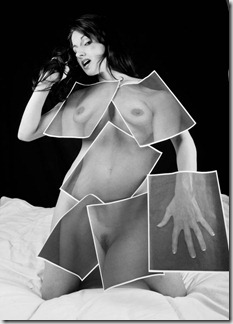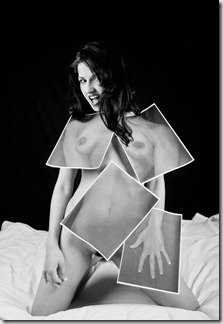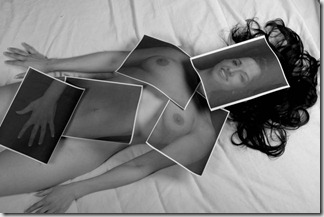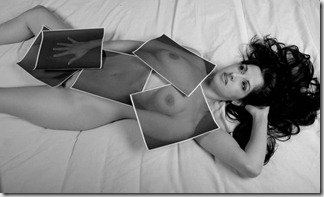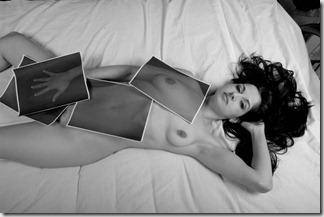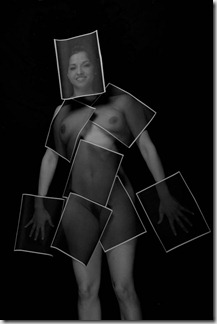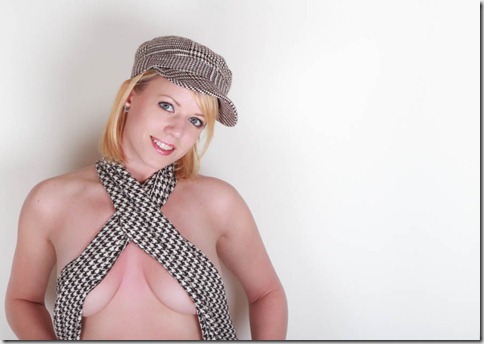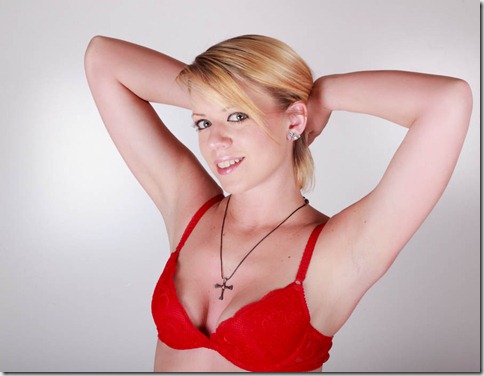Early last year I got the idea to write a short book on photographing the nude. I got encouragement to do so from a few models that I worked with along with a few other friends. I started on the book in April. In mid-December, I published it as an eBook that’s available as a PDF and for the Kindle and Nook eBook readers. With a couple months past that date, I thought I’d share a few thought on writing a book. These aren’t really specific to my book, but more general though I wrote my book with the idea it would be self-published from the start.
It Will Take Longer Than You Think
A good bit longer. I started planning the book in April, but really got serious about writing the book in May. I expected that I’d be done in August, but gave myself to the end of September as a buffer. As I’ve already noted it didn’t come out until December, a month and a half later than my worst case estimate.
I completed the first draft in late June. I sent copies out to some friends who’d agreed to review it. I was a bit behind my plan, but not too bad at this point. Over July feedback came in. I took the feedback and made my first mistake by trying to hop around and fix things as I saw them while also addressing the feedback. I tried to do all my edits at one time. By late July the resulting second draft was a jumbled book that didn’t flow as well as the previous draft in spite of the other improvements. I’d added new sections that didn’t fit well. Things didn’t flow smoothly and build from early items to more advanced topics, but skipped around. I knew the second draft wasn’t as good as my first, but I sent a couple copies out for review again. The feedback on this version agreed with my fears. The most accurate comment on the book was, “it wasn’t as clear as the first.”
By now we were into the second half of August, and I faced a choice on what to do. I wanted to write a good book and if that meant being later than I planned, so be it. I went old school by printing out the entire book on paper and bought a red pen. For the next month I almost always had a blue folder with me containing that printed copy and a red ink pen. I worked on the book just about every day. I went through the printed copy several times. First I clarified and reorganized the sections and filled in a few gaps to tie sections together. Then I worked to improve wording and clarity. Finally I went through to clean up grammar and spelling. It now had more red ink than the worst paper anyone ever turned in during English class. It took a bit more than another week to bring those changes from red ink on paper into my actual draft in Word. It was now the end of September, around the time I ‘d originally expected to be done at the latest. I had a much better book, but not a perfect one.
I had to put the book down to work on other things for a few weeks. When I got back to it, I figured out what the earliest I could have a final pass to edit completed, finish getting the quotes and photos into the book, and get the preparation to sell it completed was mid-December. I chose December 14 because it was my birthday, and I liked the idea of the final book as a present to myself. I then worked to make sure the book would be ready to sale on that date. Not just the final edits, but the web site and sales locations needed to be completed by that date.
I made the last change to the book on Monday, two days before the book came out. That literally was just about the last possible moment. The final sales setup I completed in the wee hours of the morning of December 14 with the live sales starting later that day. The truth is that you’ll never be completely satisfied with your work. Like a painting or photo project, you don’t really complete it as much as you call it finished and let it go. I still feel like I could go back and do more work on the book. Maybe that will be second edition.
Be Flexible
The book I had in mind at the start wasn’t the book I published in the end. Sure most of the book is what I envisioned. Before starting I built a list of topics to cover, and as I wrote I made notes of other topics to add that arose during the writing. Probably 1/3 of the book’s contents wasn’t in the initial plan. It needed to be there, but I didn’t see that until I noticed it missing as I wrote.
The biggest change I made in my concept occurred in September. From the start I’d discussed the book with several models to get ideas of the things they wish new photographers knew. Here I started to think of not just taking the advice, but quoting them directly in the book. In the end I was able to work in comments from several models that I interviewed and quoted for the eBook. I really think these quotes are one of the strengths of the book.
Get Help
Even with a self-published book you can’t do it all. My best decision was to get a few people I trusted to give me feedback early on. You need people who like you enough to be honest and not just tell you everything’s great. I had three people who read the first two drafts and all provided feedback that led to a better book. It was sometimes blunt, but that’s what I needed. Like a photo you like because you remember the fun during the shoot and not the photo itself, you will fall in love with your own words. It takes a lot of time to write a book and it becomes a part of you. Getting someone else to look at your work, who doesn’t have that investment, and will give you honest and constructive feedback is vital.
The positive feedback also helps you keep going when frustration and aggravation set in. Even a simple comment like, “I knew you could do this,” can help a lot.
Also know your limitations. My design skills are okay. I can put together a pretty good design given time (a good bit of my life has been spent building web sites), but I’m not quick at it. So I hired someone to create a cover for the book. That was the best money I spent on the book. In the end I had to look at costs compared to benefits. A cover was worth a little investment. I would liked to have had a good copyeditor, but just couldn’t justify the cost.
It Will Suck Your Time
There were a few periods where it felt like I only went to work, worked on the book, and slept. Social life? Not as much. Downtime? Not as much. Writing the book turned out to require a major commitment of time, and that time had to come from somewhere. I turned down lunch invitations because I needed to spend that hour editing or writing. I didn’t become a hermit or cast aside the rest of the world, but I had to make decisions on what I would do. Sometimes I chose to go grab dinner with a friend, but other times I had to stay home and work. If you’re ever went to college part-time, it’s much the same set of tradeoffs. You have to balance what you want to do with what you have to do. Sometimes the book had to come first, but at least twice I set the book aside for more than a week as other things in my life needed the attention.
Writing the Book Is Only One Part
What I screwed up more than anything was marketing for the book. I put up a very simple site for the book during the summer. It had a just a few words on the topic and a copy of a cover that I’d put together in about ten minutes (see above), but little else. No sample text from the book, no photos from the book, no updates on the book. In fact I didn’t update the site again until late November, a few weeks before the book was available. In fact the book might as well have not existed as far as most of the world knew until about mid-November when I posted it here on my blog. Next time I’ll have a cover designed as soon as I wrapped up the first draft and use the cover to build a web site that tied into the book and have it out there several months before the publish date.
One marketing thing I did right was my mailing list. Before the book was available I had a place where people could sign up to be notified about the book. A couple weeks before I started sending out info and updates. On the day the book came out I sent out a message to everyone on the list letting them know. I got a very good response and the majority of people who got the email ended up buying the book.
It’s not the Field of Dreams. Just because you write a book, doesn’t mean people will come and buy it. That’s the challenge I’m facing now, simply getting people to be aware of the book.
You Will Learn as Much as You Teach
I didn’t right a book to get rich. I wrote it in hopes I could help other people learn. What surprised me is how much I learned while writing the book. It’s one thing to do something, but it requires more thought to describe to someone else how you do it. It’s one thing to build rapport with a model, but another to explain how I do it for someone else. It’s one thing to plan a shoot, but another to describe the process.
By writing the book I had to think about how I did things. In some cases I liked the process and put it down. In others case I realized places I could do things better. I adapted. Just by having to think about what I do, I had to evaluate it. I think that doing this means I’m a better photographer than before I started the book.
I May Just Do it Again
So after more than six months of work, and so many hours that I really don’t want to know, I’d do it again knowing what would be involved. Not only that, but I’m thinking about doing it again. I have two ideas in mind and once I get a little more time behind me, I may just tackle one of them and start on the next book.

